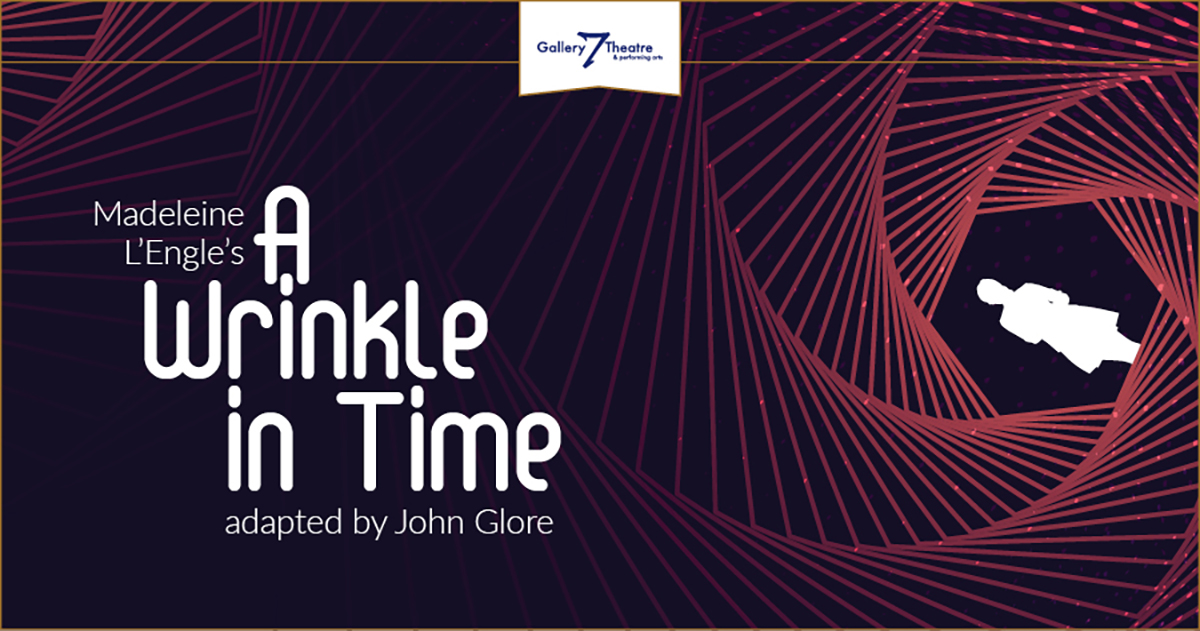On Nov. 8, Gallery 7 Theatre opened its doors for A Wrinkle in Time, directed by Kate Muchmore-Woo.
The story follows Meg Murray (Morgan Peters) as she attempts to find her father and rescue him from the evil IT, a living brain that has threatened to bring darkness to worlds across the universe. Along with her brother, Charles Wallace (Andrew Kehler), and her friend, Calvin (Brodie Rogusky), the three journey across strange, fantastical worlds with the help of three strange, fantastical women.
The play is adapted by John Glore from Madeleine L’Engle’s book of the same name. While it originates from a children’s novel, the familial and moral themes resonate with an adult audience. At the same time, the play preserves the magic of the book, keeping unparalleled childlike inventiveness.
The story’s magic stems from the narrative of good versus evil, going beyond the bizarre worlds Meg encounters or the three eccentric ladies Meg befriends. There are a thousand variations of the classic tale of good defeating evil, but none quite like Meg’s journey. IT embodies a living, deep evil that swallows up planets, and Meg must find it in herself to save those she loves from this darkness. Good science fiction produces creative worlds, but great science fiction also produces parallels to our own world.
Concepts in A Wrinkle in Time parallel many issues in today’s society: Our religion demands a moral standard and seeks for people to be made righteous, our philosophy questions our nature and the core of our wrong and right choices, and our global justice pleads for good people to triumph over evil practices. The “good versus evil” narrative is significant in our own world.
A Wrinkle in Time illustrates both the inventive magic and the concept of good and evil with a stunning visual display. L’Engle’s book actually describes things as indescribable, and this is where imagination comes in. The set design was simple and relied on a background projection to provide each scene with a location. The costumes, especially for the mystical Aunt Beast, were gorgeous. Since Aunt Beast is a large, tentacled creature, several people hid inside her costume to move her tentacles and her body.
As a result of Muchmore-Woo’s adaptation, the costumes, props, and projections were all innovative, but since L’Engle describes things in abstract terms, they still required an element of imagination. If you grew up reading L’Engle’s timeless book, you will appreciate these adaptations of costumes and set design. The same imagination needed when reading the book is valuable when watching the play. Scenes where the characters traveled by tesseract (essentially time traveling) proved to be the most visually dazzling scenes in the play, with strobe lights, violent music, and the actors’ lurching movements.
While the adaptation succeeds in its transition from novel to theatre as a whole, it breaks down in the conversion from book character to live actor. As an audience member, I found it difficult to get lost in the story because of the actors’ somewhat stilted performances. This was partly due to the actors themselves, but also due to the adaptation from book to stage. In Glore’s adaptation, many of the characters acted as narrator during scene changes, which took their character out of the story. Glore could have trusted theatre-goers to understand the scene changes — or included a separate narrator role — and avoided these awkward narrations, especially since the audience was already willing to envision aspects of the set and the costumes.
A fundamental ingredient of theatre is imagination. In a rapidly screen-dependant world, where distractions from creativity are always at your fingertips, theatre provides a way into artistic inspiration. By illuminating a pull between light and dark and by demanding theatre-goers to look inside themselves for courage and imagination, A Wrinkle in Time asks each one of us to question what is important: Is imagination lost in today’s fast-paced world? What would you be willing to do to save those you love? And most pressingly, what side of the darkness are you on?
Danaye studies English and procrastination at UFV and is very passionate about the Oxford comma. She spends her days walking to campus from the free parking zones, writing novels she'll never finish, and pretending to know how to pronounce abominable. Once she graduates, she plans to adopt a cat.


